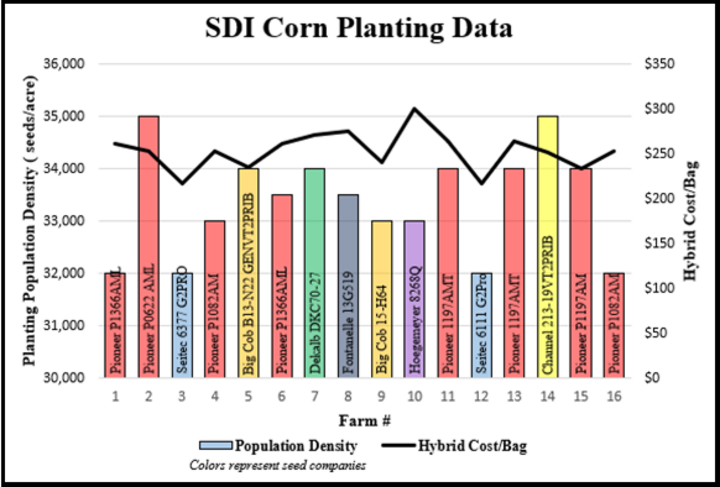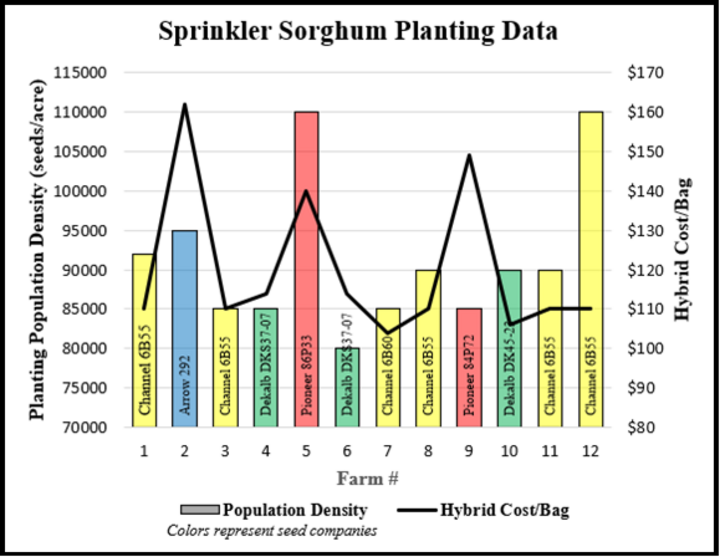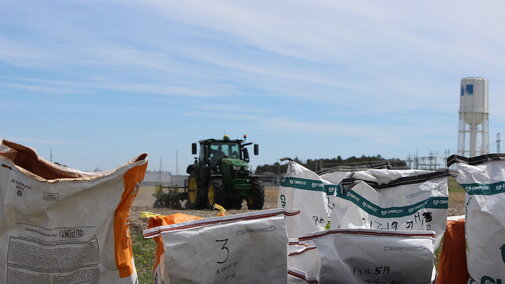Even in these uncertain times with COVID-19 the TAPS competitions, like many other farming operations, have moved forward with their 2020 planting. Participants had to make the crucial decisions for hybrid and seeding rate to use in the competition by April 10th.
This year ten seed dealers offered hybrid and seeding rate recommendations, which included 48 corn and 16 grain sorghum hybrids. “The district sales managers (DSMs) observed our soil report and field history to make the recommendations” said Daran Rudnick. Competitors were also able to select a different hybrid not listed by a seed dealer. Ten corn and three sorghum teams took advantage of that option, including one team that selected a hybrid from a company not represented.
Prior to planting, an additional fertilizer application using a double coulter liquid applicator was completed on all of the TAPS competition fields to compensate for deficiencies found in the soil sample results provided by Ward Laboratories. The following was applied to all plots so competitors will need to consider this when making future decisions: 17 lbs/ac of nitrogen, 30 lbs/ac of phosphorus, 18 lbs/acre of sulfur, and 0.5 lbs/ac of zinc.
Among the 27 sprinkler corn competition teams, 15 different hybrids from 7 companies were selected (Figure 1). Six teams chose hybrids not on the recommended hybrid list. Seeding rates ranged from 28,500 to 35,000 seeds per acre with the average and median being 32,389 and 32,500 seeds per acre, respectively. Four of the hybrids will be used by three separate teams in the competition, but most of those teams chose different seeding rates. The sprinkler corn competition was planted April 30th at a depth of 2 inches using a 6-row precision planter. This is approximately 15 days ahead of the corn planting date for the 2019 competition due to the more favorable weather conditions this year.
In the second year of the subsurface drip irrigated (SDI) corn competition the 16 teams selected 13 different hybrids from 8 companies for this year (Figure 2). The seeding rate ranged from 32,000 to 35,000 seeds per acre with the average and median being 33,375 and 33,500 seeds per acre, respectively. Only three hybrids were selected by more than one team. The SDI competition was planted on May 1st with the same equipment as the sprinkler irrigated corn competition.


This year’s selections in the sprinkler corn competition ranged in price from $151 to $284 per bag, whereas the SDI corn hybrids range was smaller with a range from $217 to $300 per bag. As the year progresses, this difference in per bag cost between competitors could make a difference in profitability, especially in the sprinkler corn competition.
Competitors for the sorghum competition selected 7 different hybrids from 4 companies (Figure 3). Three contestants chose to select a non-recommended hybrid. The seeding rates ranged from 80,000 to 110,000 seeds per acre with the average and median being 91,417 and 90,000 seeds per acre, respectively. Much different from last year, five teams selected the same hybrid, Channel 6B55. Of those that selected the same seed, only two teams chose the same seeding rate for the hybrid. The sorghum hybrids ranged from $104 to $162 per bag. The sorghum competition is tentatively scheduled to be planted mid to end of May, depending on conditions.


